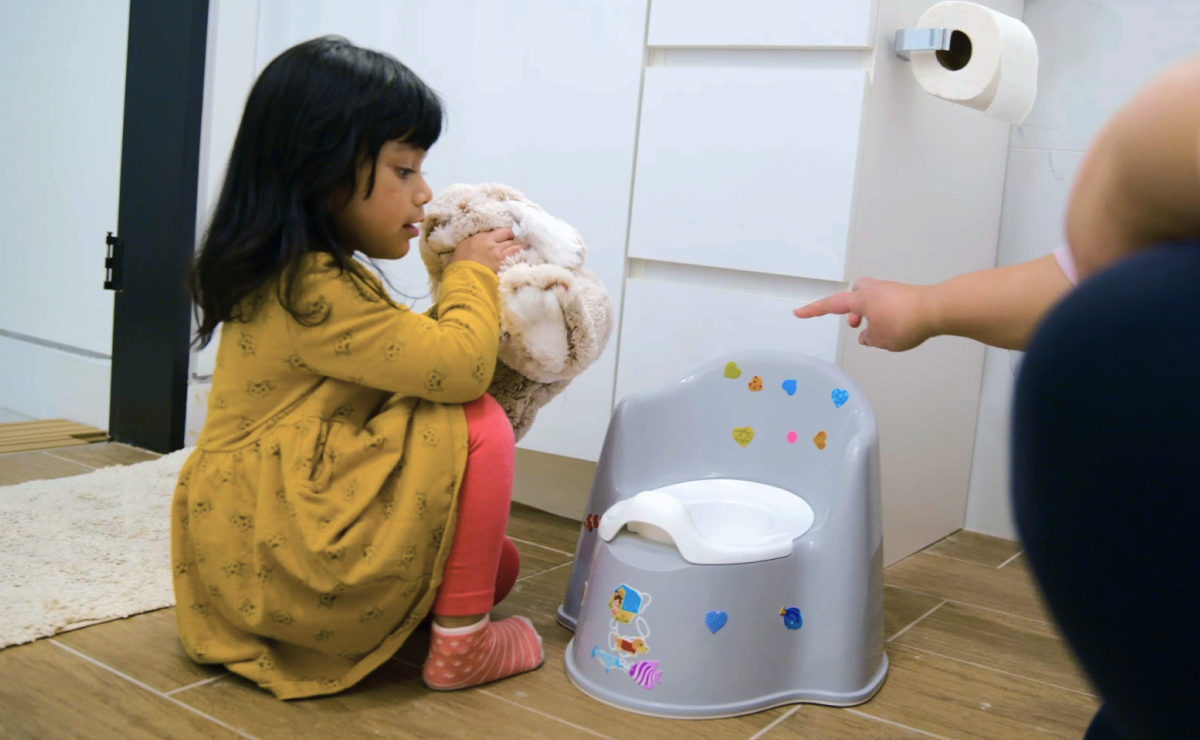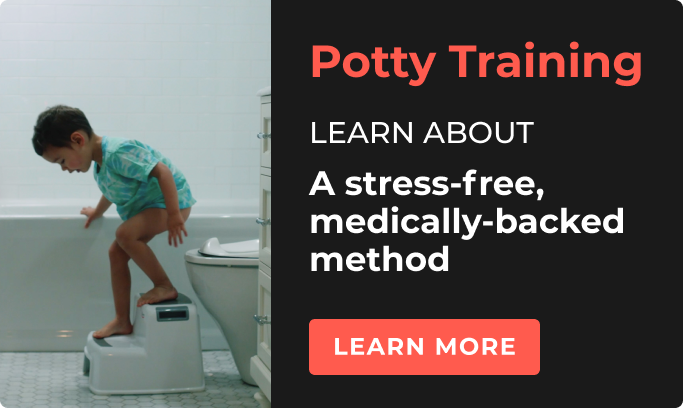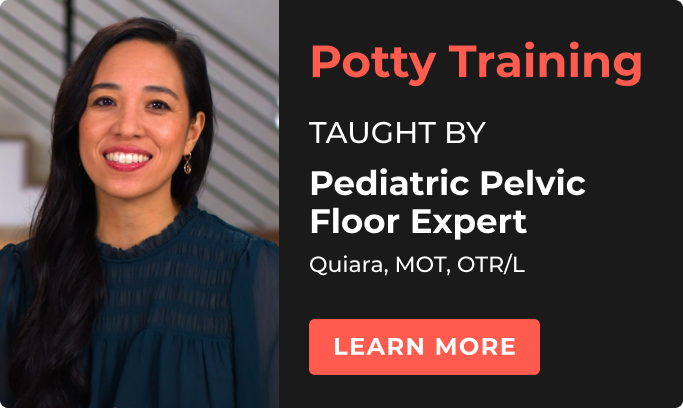
Do you think your toddler is close to, or ready to start potty training? Have they become more curious about the toilet? Maybe they’ve started following you into the bathroom and asking questions, or have started to become increasingly bothered by dirty diapers? These all could be signs your toddler is ready to start potty training, but making sure they (and you!) are prepared is the first step to success.
According to our Potty Training expert instructor Quiara Smith, a Pediatric Occupational Therapist, you can start preparing your child for potty training as early as 18 months old. This unique developmental period is a good time to lay some important groundwork to help ensure a successful and positive experience when the time is right, and you move on to full potty learning. By 24-30 months, they will not only be biologically ready for potty training but also will start to be more independent – which will not only give your child a healthy sense of autonomy and desire to learn how to use the potty on their own, but they will be able to imitate you and start to remember the steps that go into using the toilet.
Until you feel like your child is ready to start potty training, try incorporating the activities below into your day, to strengthen these skills and engage your toddler with the potty.
Simple Activities to Prepare Your Toddler for Potty Training Success:
- Introduce a floor potty. Our expert reommends a small, ergonomic and portable option which allows your child quick access, such as the BabyBjorn potty chair. Doing this before the potty training process allows your child to explore and become familiar with the potty, develop an understanding of how it works, and practice in a stress-free setting.
- Use potty-related books, songs & videos. There are many options out there, but you can check out our expert-recommended ones here. You can even try making your own with your child!
- Use modeling. Show your child how using the potty works. Remember, young children learn new skills and better understand the world around them through imitation. You can model using the potty by being explicit about your own bathroom usage. Let them follow you into the bathroom, talk about what you are feeling and doing, so your child can not only see the process in action, but understand how to communicate their bodily sensations and act on them.
- Use pretend play. Bring the floor potty into your playspace, and begin to incorporate it into your child’s favorite games. Allowing your child to see their favorite toys using the potty before they are expected to, reinforces that the potty is safe, not scary.
- Bring them into a public restroom. Ok, we know this one might seem odd, but getting them used to sights and sounds (hello, automatic flushers and hand dryers) can start to get them acclimated before having the added pressure to actually use the potty.
- Make it fun and personalized! Help your child decorate their potty with their favorite stickers, and pick out a potty chair color they will love. Heads up - BabyBjorn offers their potty chair in an array of colors.
The activities above help your child prepare mentally and emotionally for potty training. But, there are a few activities you can do to help them also prepare physically, since ultimately potty training comes down to helping them establish a connection between their pelvic floor muscles and their brain.
Activities to Boost Your Toddler’s Physical Readiness for Potty Training:
- Teach them breathwork. Deep belly breaths help relax the pelvic floor muscles, while also allowing the diaphragm to drop and provide gentle pressure on the area helping your child go to the bathroom. We go over exactly how to do this in our Potty Training Prep: Setting Your Toddler up for Success online course.
- Try yoga with them. Yoga is another great way to help build this mind-body connection through breath, and child’s pose is particularly good for relaxing those pelvic floor muscles.
Again, these activities are meant to engage your toddler in the potty in a low pressure way, preparing them and their bodies for what's to come. If you think your toddler is ready for potty training, check out our Potty Training: The Stress-free Guide to Success online class for easy step-by-step instructions on how to get your toddler using the toilet independently in a matter of days.
Tinyhood only recommends products that we genuinely love and are vetted by experts. If you buy something through links on our site, we may earn a commission.




